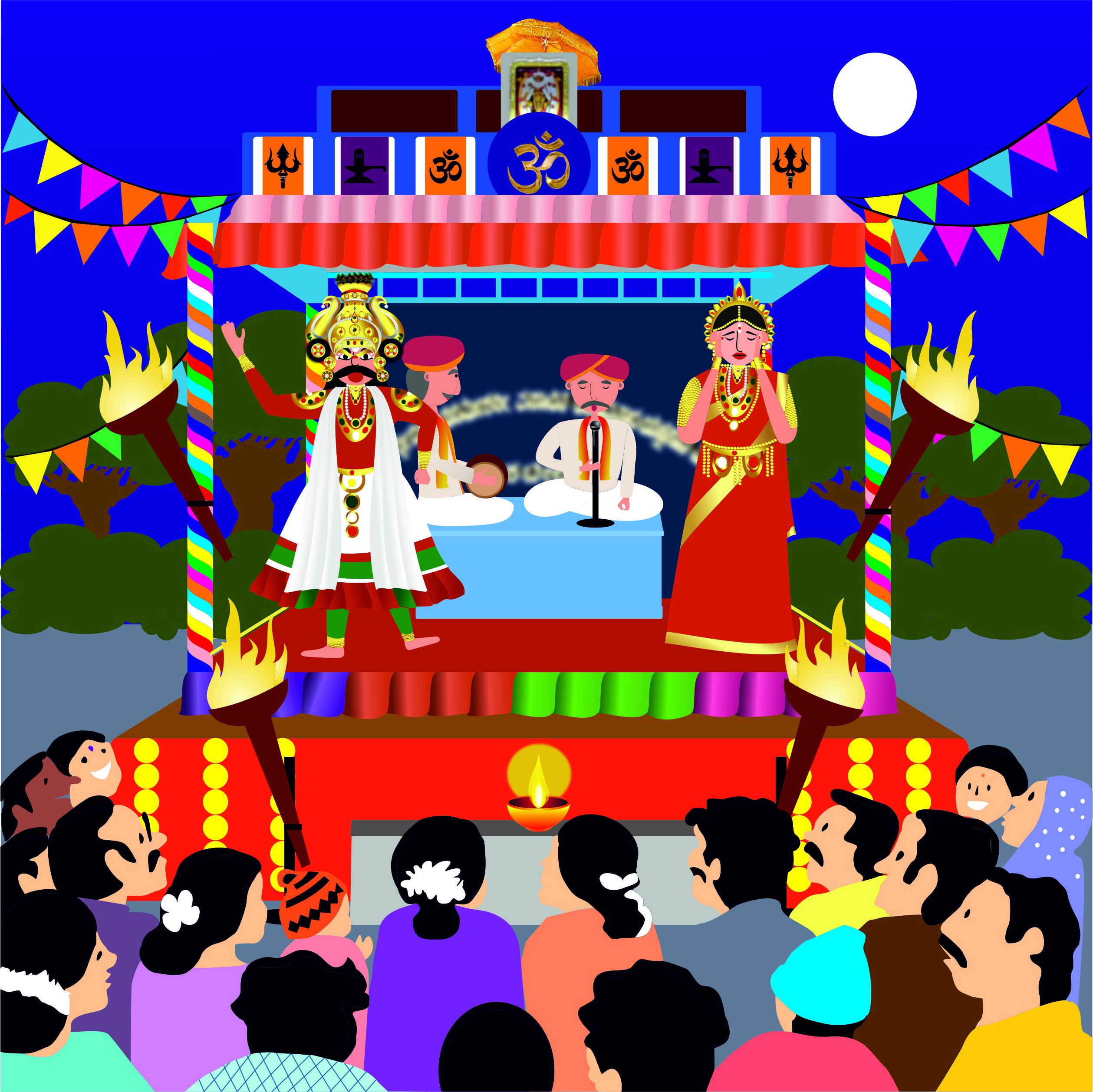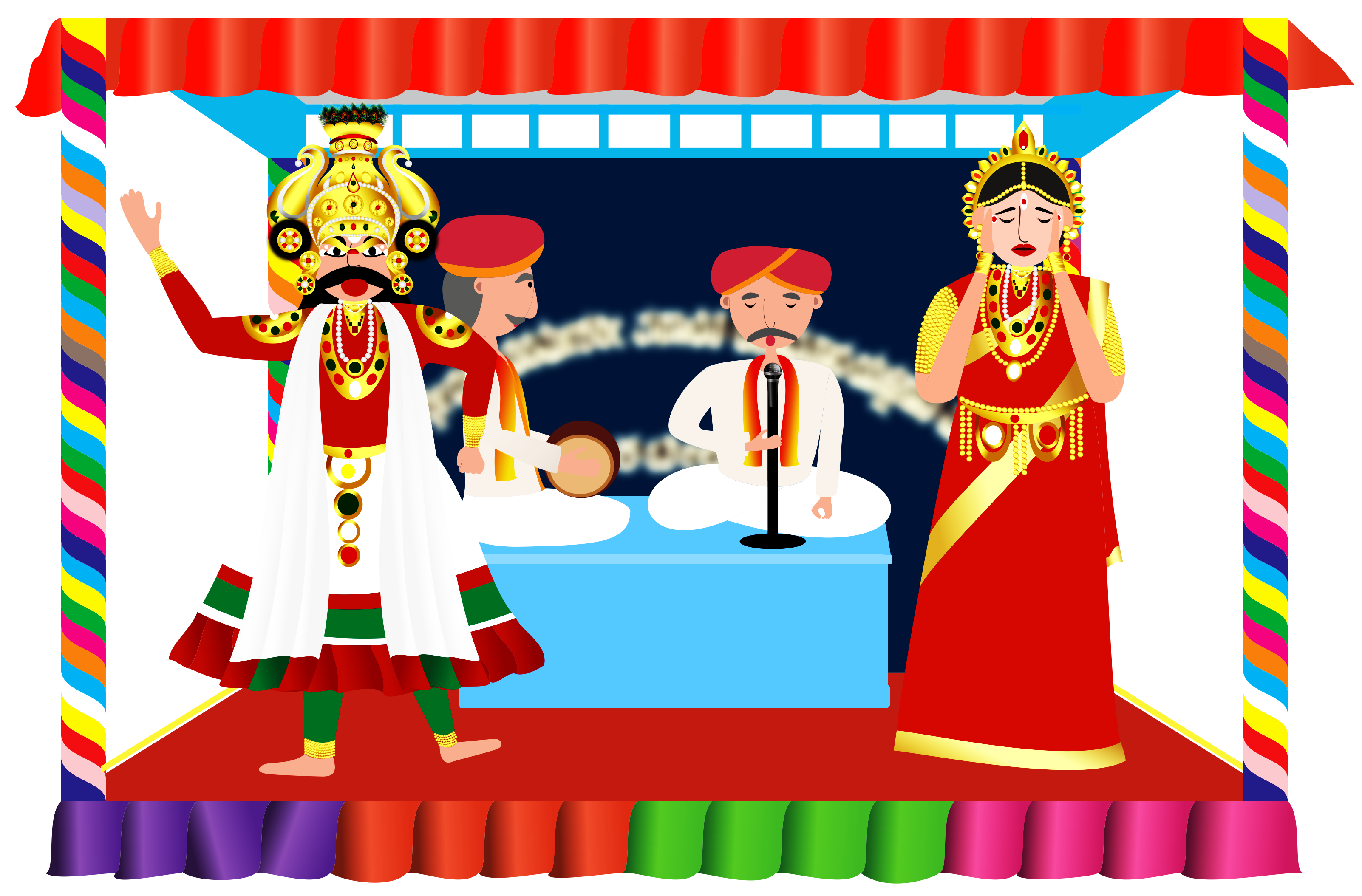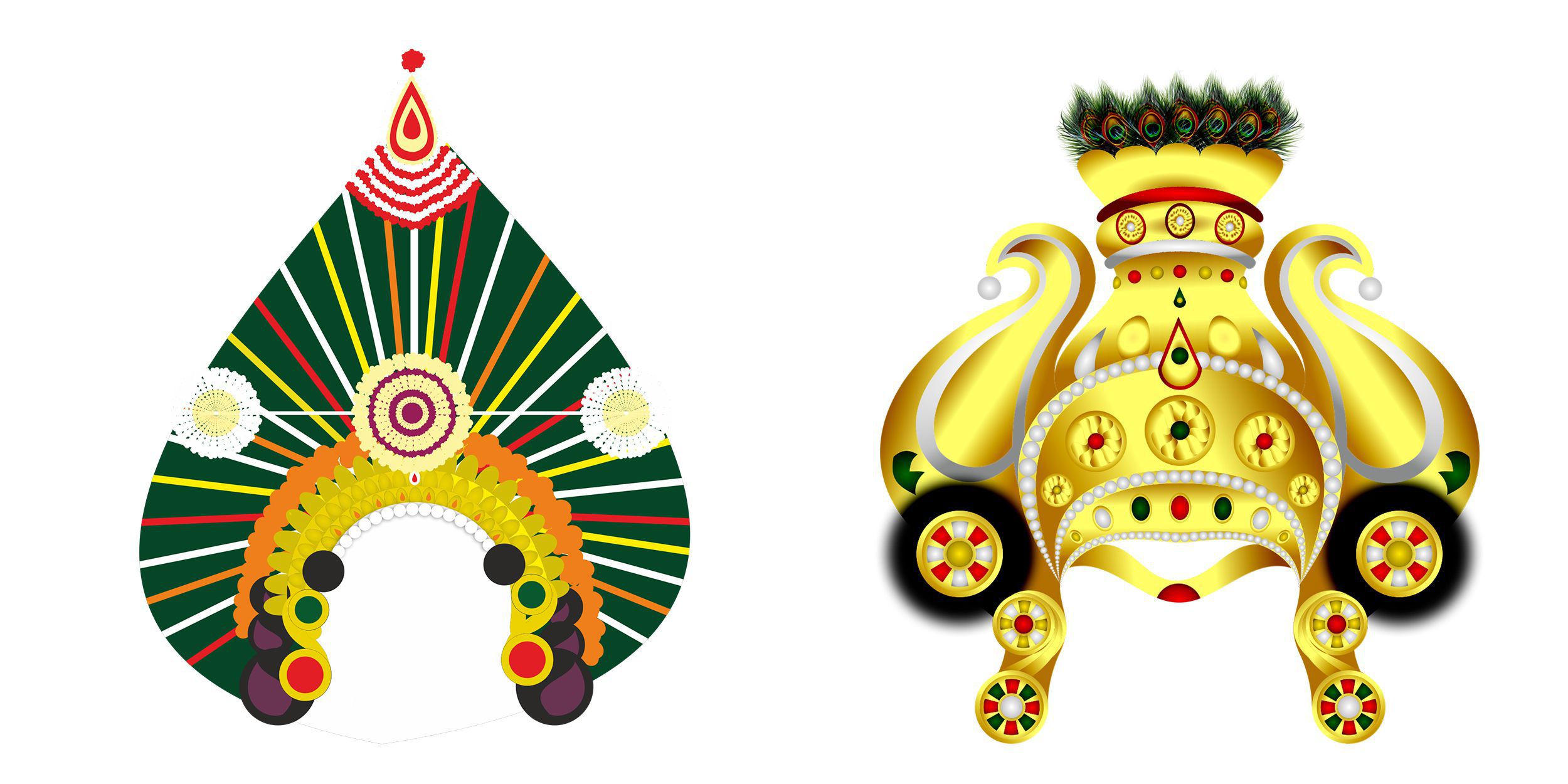
Yakshagana is a theatrical form of presenting Mythological and historical stories. A Yakshagana performance includes music, dance and dialogues. The word Yakshagana means the songs of the Demi-Gods (yaksh ‘meaning Demi-God, and ‘gana’ meaning song). The performers wear interesting and colourful costumes, and elaborate headgears. The stage design and unique rendering is similar to that of the Western Opera. Traditionally, Yakshagana would go on all night.
It is sometimes simply called as Aataā in both Kannada and Tulu, meaning “play”. Yaksha-gana literally means the song (gana) of a Yaksha.


Yakshas were an exotic tribe mentioned in the Sanskrit literature of ancient India. It is believed to have originated in the coastal districts of Karnataka. The true representation of the poems enacted in these plays is attributed to have started during the Vaishnav Bhakti movement in the 11th century. In 13th century, a Sage named Narahari Thirtha started Dashavathara performance in Udupi, which later developed into the Yakshagana of today.
Yakshagana played in beachfront of Karnataka regions, resembles a benison to the divine beings in the sanctuaries. At the point when individuals get what they long for, they thank god as a benison called ‘Playing the Aataa’ and ‘watching the Aataa’ Towards the south from Dakshina kannada to Kasaragod of Tulu Nadu region, the form of Yakshagana is called as ‘Thenku thittu’ and towards north from Udupi up to Uttara Kannada it’s called as ‘Badaga Thittu’.

Both of these forms are equally played all over the region. Yakshagana is popular in the districts of Uttara Kannada, Udupi, Dakshina Kannada, and Shimoga of Karnataka and Kasaragod district of Kerala. Yakshagana is gaining popularity in Bengaluru since a few years. It has drawn comparisons to the Western tradition of opera. Yakshagana is slowly but steadily gaining popularity outside India. Amateur groups have successfully staged performances in the USA and Canada.

